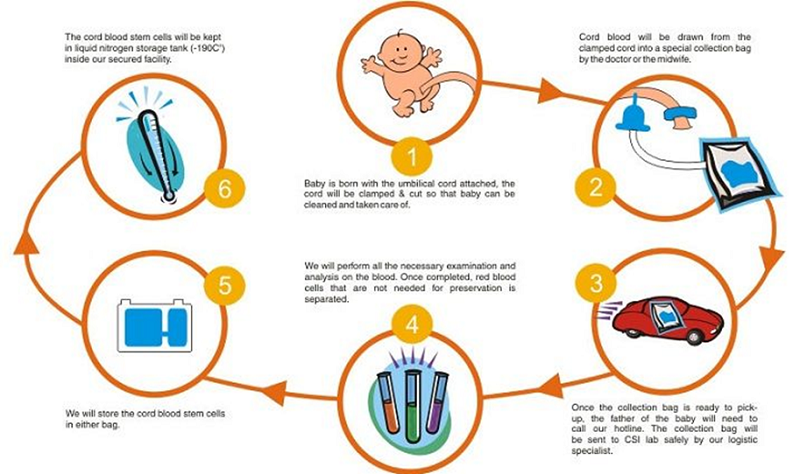Cord blood banking involves the collection, processing, and storage of blood from the umbilical wire and placenta after a child is born. This blood is wealthy in hematopoietic stem cells, which have the potential to become numerous types of blood cells. Here are the necessary thing steps concerned in twine blood banking:
Collection:
After the infant is born and the umbilical cord is clamped and reduce, the remaining blood in the umbilical wire and placenta is collected. This process is protected, painless, and non-invasive.
Processing:
The collected twine blood is processed to separate and focus the stem cells. This involves eradicating red blood cells and different components to depart a product wealthy in hematopoietic stem cells.
Testing:
The wire blood unit undergoes various exams to make sure its safety and viability. These checks embody screening for infectious illnesses and checking the compatibility of the blood with potential recipients.
Cryopreservation:
The processed and tested cord blood is then cryogenically preserved, sometimes by freezing it at very low temperatures. This long-term storage helps keep the viability of the stem cells for an prolonged interval.
Storage:
The cryopreserved wire blood unit is stored in specialized amenities, often referred to as twine blood banks. These banks observe strict protocols to make sure the security and integrity of the stored cord blood.
Private Cord Blood Banking:
Family Use:
Some parents go for personal twine blood banking, the place they pay to retailer their child's wire blood exclusively for their family's potential use. This is completed in case a family member develops a medical condition that could be handled with a stem cell transplant.
Public Cord Blood Banking:
Donation:
Parents even have the option to donate their child's cord blood to a public twine blood bank. In this case, the wire blood becomes a part of a public registry and could additionally be used by anybody in want of a stem cell transplant.

Community Benefit:
Public cord blood banking contributes to building a diverse and in depth stock of wire blood units, increasing the chances of discovering an appropriate match for patients who require stem cell transplants. It is considered a group service.
Learn more here :
Cost:
Private cord blood banking involves initial charges for assortment, processing, and storage, while public cord blood banking is often free for donors.
Medical Conditions:
Families could think about twine blood banking if they've a historical past of sure medical circumstances that could potentially be treated with a stem cell transplant.
Educational Programs:
Cord blood banks typically provide educational packages to tell expectant mother and father about the benefits and issues of twine blood banking.
Cord blood banking is a priceless resource for potential medical therapies, notably within the context of hematopoietic stem cell transplantation. Parents should fastidiously weigh the potential advantages and costs when deciding whether or not to privately bank their child's cord blood or contribute to a public cord blood financial institution..
